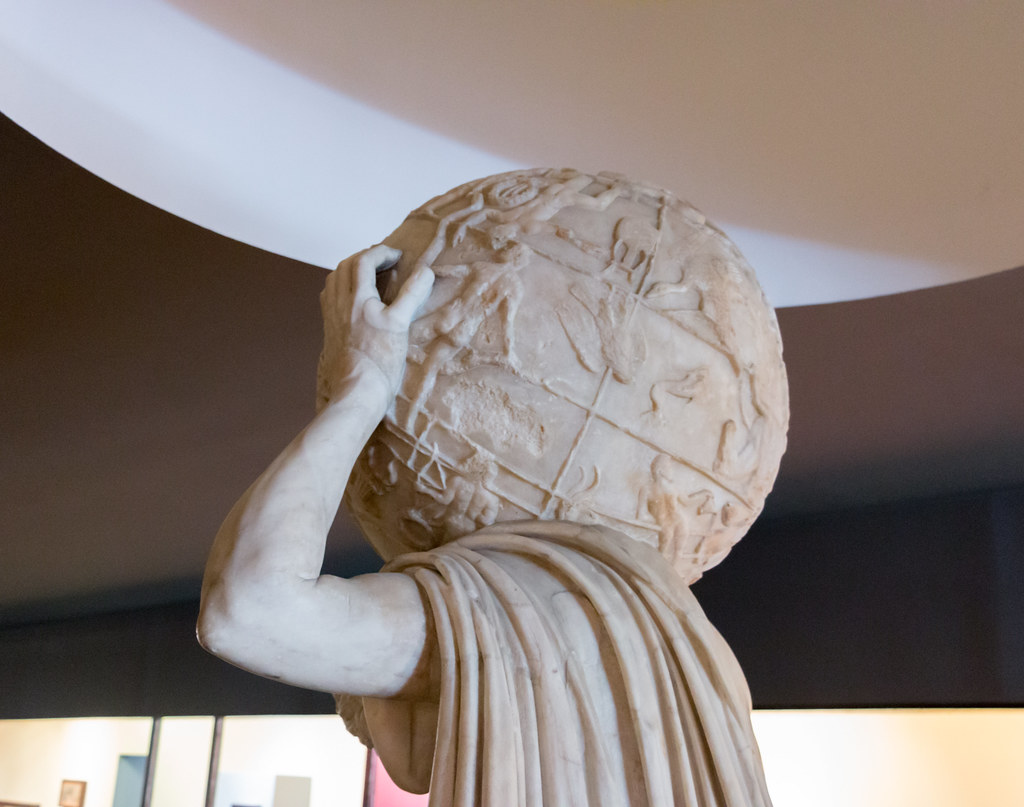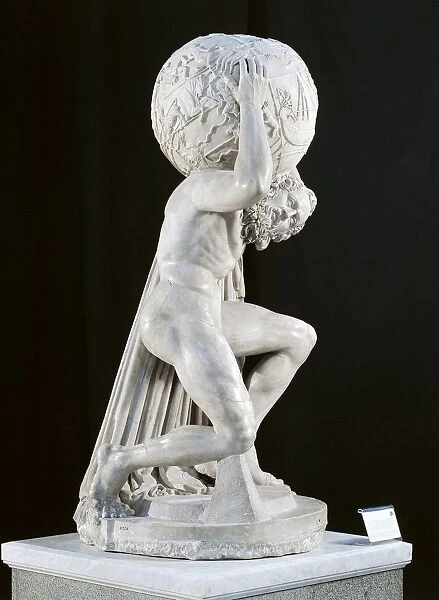The National Archaeological Museum in Naples, Italy is home to a marble sculpture from the second century AD known as the Farnese Atlas.

The Farnese Atlas, a remarkable marble sculpture dating back to the 2nd century AD, is among the prized possessions of the National Archaeological Museum in Naples, Italy. This exquisite masterpiece, depicting the mythological figure of Atlas, has captivated the imagination of viewers for centuries with its intricate details and profound symbolism.

At the heart of the sculpture stands Atlas, the Titan condemned by Zeus to carry the celestial sphere on his shoulders for eternity. Kneeling on one knee, Atlas stoically supports a large globe, measuring 65 centimeters in diameter, upon one shoulder. His muscular form and serene expression convey a sense of strength and endurance, befitting his divine punishment.
What sets the Farnese Atlas apart is the meticulous attention to detail in the representation of the celestial sphere. Carved into the surface of the globe are 41 constellations, each meticulously placed against a grid of reference circles. These circles include the equator, tropics, colures, Arctic circle, and Antarctic circle, allowing viewers to envision the celestial sphere in its entirety.
The accuracy of the constellation placement is a testament to the astronomical knowledge of the ancient world. Long before the advent of modern telescopes and technology, ancient astronomers meticulously observed the night sky, mapping out the patterns of stars and constellations with remarkable precision. The Farnese Atlas serves as a tangible reminder of their ingenuity and dedication to understanding the cosmos.

As viewers gaze upon the Farnese Atlas, they are transported on a journey through time and space. Through the eyes of Atlas, they glimpse the vastness of the universe, with its countless stars and galaxies stretching out into infinity. The sculpture invites contemplation of humanity’s place in the cosmos, stirring feelings of awe and wonder at the sheer magnitude of creation.
But beyond its astronomical significance, the Farnese Atlas holds deeper layers of symbolism and meaning. In Greek mythology, Atlas is not merely a celestial figure; he is also associated with endurance, strength, and the weight of responsibility. His burden represents the struggles and challenges that each individual must bear in life, serving as a reminder of the resilience of the human spirit.

The Farnese Atlas also speaks to the enduring legacy of ancient civilizations and their contributions to human knowledge and culture. As one of the treasures of the National Archaeological Museum in Naples, it serves as a tangible link to the past, connecting us with the wisdom and achievements of those who came before us.
In conclusion, the Farnese Atlas stands as a testament to the ingenuity, artistry, and astronomical knowledge of the ancient world. Through its intricate craftsmanship and profound symbolism, it invites viewers to contemplate the mysteries of the cosmos and the enduring spirit of humanity. As we marvel at its beauty and significance, we are reminded of the timeless quest for knowledge and understanding that unites us across the ages.